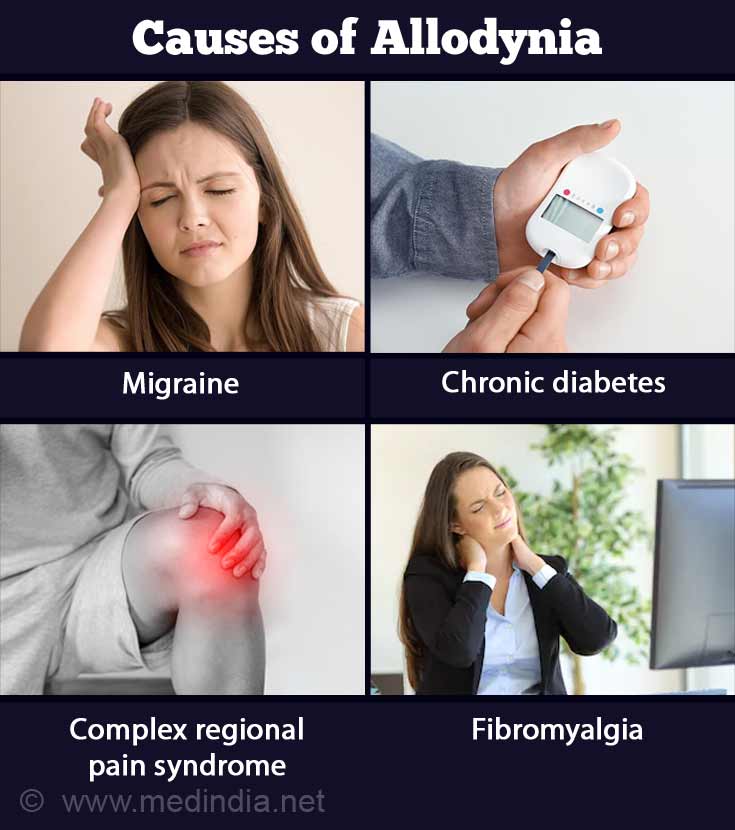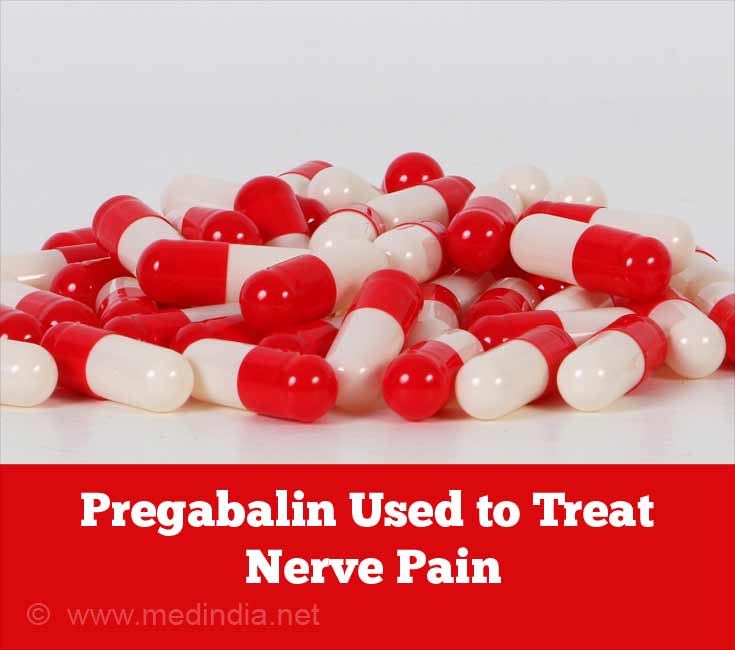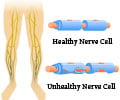- Cutaneous Allodynia in the Migraine Population -Richard B. Lipton, MD,1,2,3 Marcelo E. Bigal, MD, PhD,1,3,4 Sait Ashina, MD,1 Rami Burstein, PhD,5Stephen Silberstein, MD,6 Michael L. Reed, PhD,7 Daniel Serrano, MA,7 and Walter F. Stewart, PhD8, on behalf of the American Migraine Prevalence Prevention Advisory Group - (https://www.ncbi.nlm.nih.gov/pmc/articles/pmc2729495/)
- Physiologyorg-Journals - (https://www.physiology.org/doi/10.1152/physrev.00025.2008)
- Pain and Allodynia, Itch and Alloknesis: An Alternative Hypothesis-H. 0. Handwerker - (https://www.jpain.org/article/1058-9139(92)90043-c/pdf)
- Using Somatosensory Rehabilitation to Treat Allodynia- By Guest Blogger Tara Packham, Ph.D., OTReg (Ont). Postdoctoral fellow, Michael G. DeGroote Institute for Pain Research and Care.McMaster University, Hamilton, Ontario Canada - (https://rsds.org/somatosensory-rehabilitation-allodynia/)
What is Allodynia?
Allodynia refers to a disease of nerves in which there is increased response of sensory nerve fibers to a normally non-painful stimulus. Allodynia is a condition in which something such as shaving or brushing the hair that does not ordinarily cause pain actually does cause pain. The word “allodynia” was coined by Professor Paul Potter of the Department of the History of Medicine and Science at The University of Western Ontario. Allodynia comes from the Greek word "allos" meaning "other," and the Greek word "odyne" meaning "pain."
Allodynia is a prominent symptom in patients with peripheral neuropathies and central pain disorders and affects 15-50 percent of patients. Allodynia can be a symptom of several different nerve conditions or it can occur on its own.
What are the Types of Allodynia?
- Thermal allodynia: This type occurs in response to mildly hot or cold temperature sensations.
- Mechanical allodynia: Movement across the skin such as brushing the hair or wearing clothes may be painful.
- Tactile allodynia: This type is also called static allodynia and occurs due to light touch or pressure on the skin such as a tap on the shoulder.
What are the Causes of Allodynia?
The exact cause of allodynia is not known. Abnormal functioning of pain receptors (known as nociceptors) or repeated stimulation of nerve endings cause the nerve endings to increase their responsiveness and are possible causative factors.
- According to the American Migraine Foundation, up to eighty percent of people experience symptoms of allodynia during a migraine. As a result you may suffer from nausea, increased sensitivity to sound and light along with a severe headache.
- If you are suffering from Complex Regional Pain Syndrome (chronic pain in the arm or leg which occurs after injury, surgery, stroke or heart attack) the chances of developing allodynia are increased.
- Sometimes shingles can cause damage to the nerve fibers resulting in post-herpetic neuralgia which is associated with allodynia.
- There also seems to be a genetic link between allodynia and fibromyalgia, a condition which causes widespread pain in the body.
- Chronic diabetes patients can suffer from nerve damage due to lower levels of Nerve growth factor (NGF), thus increasing the likelihood that a person will develop allodynia.

What are the Symptoms and Signs of Allodynia?
- Pain from ordinarily non-painful stimuli. Various painful sensations such as a burning sensation, an ache or squeezing type of pain.
- Decrease in quality of life, as allodynia can limit the activities a person is able to perform.
- Depression
- Sleep disturbances
- Anxiety
- Fatigue
How do you Diagnose Allodynia?
Firstly, a doctor will take a detailed medical history, and review your symptoms followed by a thorough physical examination. Since many conditions can cause chronic pain, doctors need to rule out certain medical conditions before they can make a diagnosis of allodynia. There is no specific medical test to diagnose allodynia.
- Blood tests: to measure the level of glucose, thyroid function or look for evidence of infection.
- Nerve conduction studies.
- Standardized Evaluation of Pain (StEP) - It combines six interview questions and ten physical tests to differentiate allodynia from other types of pain.
How do you Treat Allodynia?
- Medications - Pregabalin is a medication used to treat nerve pain associated with conditions such as spinal cord injuries, diabetes, fibromyalgia and shingles. Topical pain medications or non-steroidal medicines may also be effective.

- Identifying and decreasing pain triggers - If your skin is sensitive to a certain fabric you can try clothing made of a different, less irritating material.
- Treat the underlying disease condition such as migraine, diabetes or fibromyalgia.
- Quit smoking - Smokers are known to experience more chronic pain than nonsmokers.
- Making lifestyle changes - This includes light exercise, a healthy diet and getting enough sleep which will enhance overall health.
- Lower stress levels.
- Somatosensory rehabilitation for pain - This is a treatment method developed by Claude Spicher, an occupational therapist in Switzerland. He observed that persons who had neuropathic pain always had an area of numbness. By using comfortable somatosensory stimulation on an area of skin related to the same nerve, but away from the injury, this intense stimulation would over-ride the painful sensations thus reducing the pain.
- Psychological counseling.
- Electrical or magnetic stimulation.
- Natural treatment with herbs such as ginger, cayenne, chamomile, echinacea, ginseng, golden seal, lavender have proved beneficial in reducing the pain of allodynia.
What are the Risk Factors of Allodynia?
If you are suffering from fibromyalgia, diabetes or migraines you are at higher risk of developing allodynia. If you have suffered from chicken pox or shingles you may develop post herpetic neuralgia which also raises your risk of developing allodynia.










